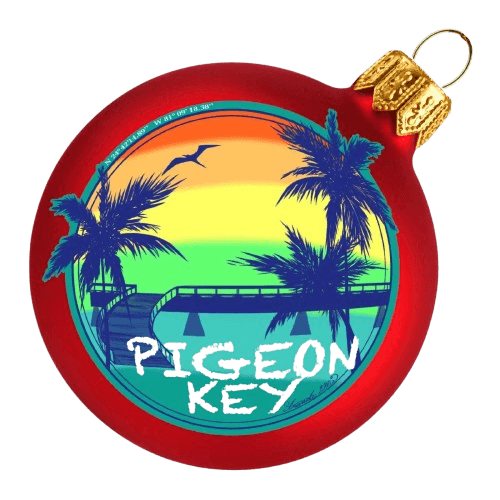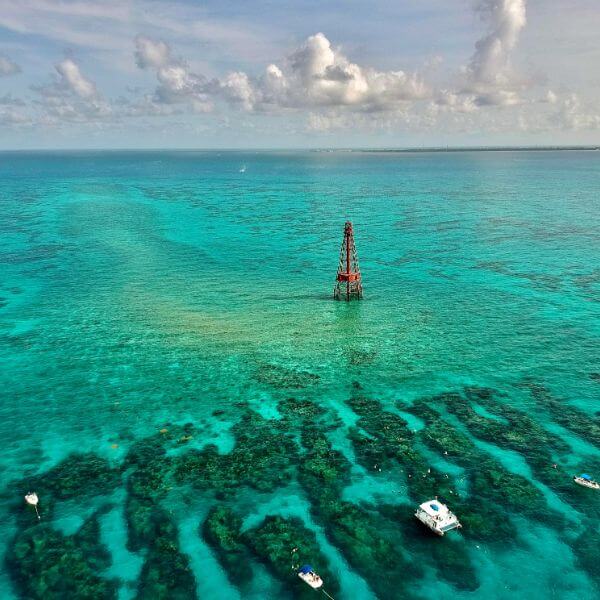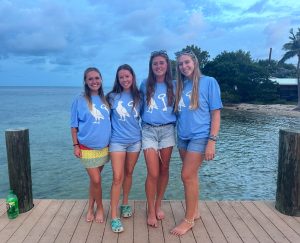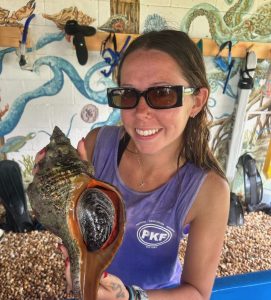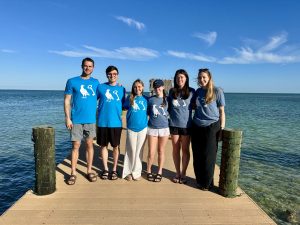Coral reefs are some of the most diverse and important ecosystems on the planet, providing habitats and shelter for countless species in the ocean. Despite making up only 1% of the ocean’s landscape, coral reefs around the world provide a habitat for approximately 25% of all marine life!
The Florida Keys are home to one of the largest coral reef systems in the world, covering over 2,900 square kilometers. These coral reefs are an essential part of the marine ecosystem and play a crucial role in supporting a diverse range of marine life.
Coral reefs are formed by the accumulation of calcium carbonate, which is produced by millions of tiny coral animals called polyps. These polyps form colonies that grow and reproduce, eventually creating the intricate structures that make up a coral reef. The reefs are further shaped and eroded by the constant flow of water, which brings in nutrients and oxygen as well as removes waste from the area.
One of the most important (and fascinating) aspects of the coral reef habitat is the symbiotic, or mutually beneficial, relationship between corals and zooxanthellae. Zooxanthellae are tiny, single-celled algae that live within the tissues of coral polyps. This relationship is crucial to the health and survival of both the coral and the algae.
Zooxanthellae are photosynthetic, meaning that they use energy from the sun to produce food. They are also able to transfer some of this energy to the coral polyps, which provides corals with the nutrients they need to grow and survive. In exchange, the coral provides the zooxanthellae with a protected environment and access to the nutrients they need to grow and reproduce.
This symbiotic relationship is also what gives coral reefs their vibrant colors and incredible diversity. The zooxanthellae are responsible for the bright hues of the corals, and they play a crucial role in the ecosystem by providing food for many other species of marine life. However, this relationship is also delicate and vulnerable to environmental stressors.
Rising sea temperatures and ocean pollution can cause the zooxanthellae to die or be expelled from the coral, a process known as coral bleaching. When this happens, the coral loses its primary source of nutrition and is much more susceptible to disease and death.
In addition to corals, reef habitats support sponges and other invertebrates that provide habitat, shelter, and food for countless species of fish, turtles, and crustaceans. These biodiverse reefs are a popular attraction for tourists, who come to the Florida Keys to snorkel and scuba dive in the clear waters and experience the vibrant colors and unique beauty of the underwater world.
Sombrero Reef, located just five miles south of Pigeon Key, is one of the most popular snorkeling and diving destinations in the Florida Keys. It covers an area of approximately 30 acres and is home to a variety of marine organisms. We take our marine science education groups snorkeling here, where we often see parrotfish, moray eels, and sometimes even sea turtles!
Other popular reefs nearby include Looe Key Reef, which is just south of Big Pine Key and is a great place to spot reef sharks and eagle rays passing through. Coffins Patch, located southeast of Marathon, is a protected area and is known for its impressive elkhorn and staghorn coral formations. Delta Shoals, a large shallow reef complex to the west of Pigeon Key, is home to a variety of coral formations and marine life. Turtle Shoal, located off the coast of Marathon, is known for its turtle-shaped coral formation and is a popular destination for snorkelers and divers alike.
However, all of these reefs are threatened not only by pollution and bleaching, but also overfishing, dredging, and coastal development. The loss of our coral reefs threatens not only marine life, but humans too. Coral reefs protect coastlines from storms and wave action. Furthermore, they are a source of income for millions of people, and generate revenue for places like Marathon.
To protect coral reef habitats of the Florida Keys, it is important that we take action to reduce our impact on the environment. This can include reducing our use of single-use plastics, supporting sustainable fishing practices, and advocating for policies that protect the environment. By working together to protect this fragile ecosystem, we can ensure that future generations can enjoy the beauty and diversity of the coral reefs in the Florida Keys and around the world.
